The fun and games were over. It was time we leave the sailor’s sandbox surrounding the Isle of Wight and start making miles to the east. Try as we might, we couldn’t find anything sexy written about this stretch of England’s coast as it narrows on its way to the Straits of Dover. In sailor lingo, we were faced with a coast of passage. Not much to see, and you hope for good wind to get it over with sooner.

As if challenging us with a self-fulfilling prophecy, Mother Nature dished out a dull gray sky, a cold salty ocean breeze, and monochromatic seas, the kind that blend right into the sky. We let Portsmouth fade into the distance to our stern as we followed a course offshore to avoid a mess of shoals and rocks off of Selsey Bill. When you have a long way to go already, these wayward diversions, especially at the outset, are like having to walk around your house three times before hiking across the continent. It was June 7th, my Mom’s birthday, a women of fierce determination and fortitude. If she were still alive, she’d be proud I was channeling her impatient drive today. Finally we were in clear water and could set an honest course east on a rolly, beam reach sail. Messy seas are no one’s wish, but if you can set loose a lightweight cruising sailboat like Sea Rose, she’ll take up the wind like the spontaneous gallop of a thoroughbred, smoothing out the seas and tickling the fancy of the helmsperson eyeing the ‘Waypoint ETA’ reading.
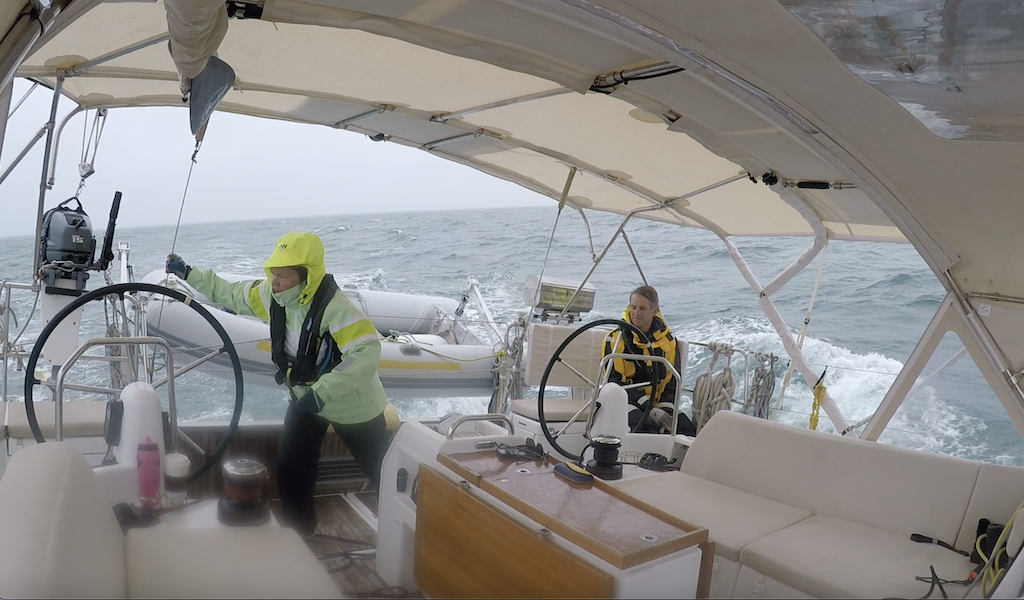
Our destination was the seaside community of Brighton, 45 miles away. All I could picture, as the miles passed on these full day sails, was ‘Brighton Beach Memoirs’ and how we would soon see the inspiration for the movie. In fact, the movie was based on Brighton Beach, NY, but still, depending on who you talk to, the Brighton was inspired by this Brighton off our bow.
No Hollywood film crew awaited our arrival. Instead, breaking waves at the sea wall guarding the marina entrance sent sweat beads down our necks. There was an inner sea wall and an outer sea wall that hooked around the inner one to make the waves work harder to get inside the marina. That was all well and good, but coming from the sea, all we could see was a long line of breaking waves and white water. Complicating matters, the ‘chart datum’ depth level (typically synonymous with low tide) of the entrance was just 2 meters. We were arriving at mid-tide rising, which would add about 2 meters to the depth. But with a keel of 2.2 meters, heavy seas, and unknown changes to sandy bottom conditions since the last survey was done, there was a possibility we could run aground. Only until we were a few boat lengths away could we make out the narrow hook of an entrance, with water surging past big, round concrete abutments that would require careful positioning of Sea Rose so that we didn’t get pulled sideways into the concrete as the breaking waves retreated. Rusty steel handrails ran along the top of the walls, for work crew use on alternative days when tempestuous seas had run out of steam.
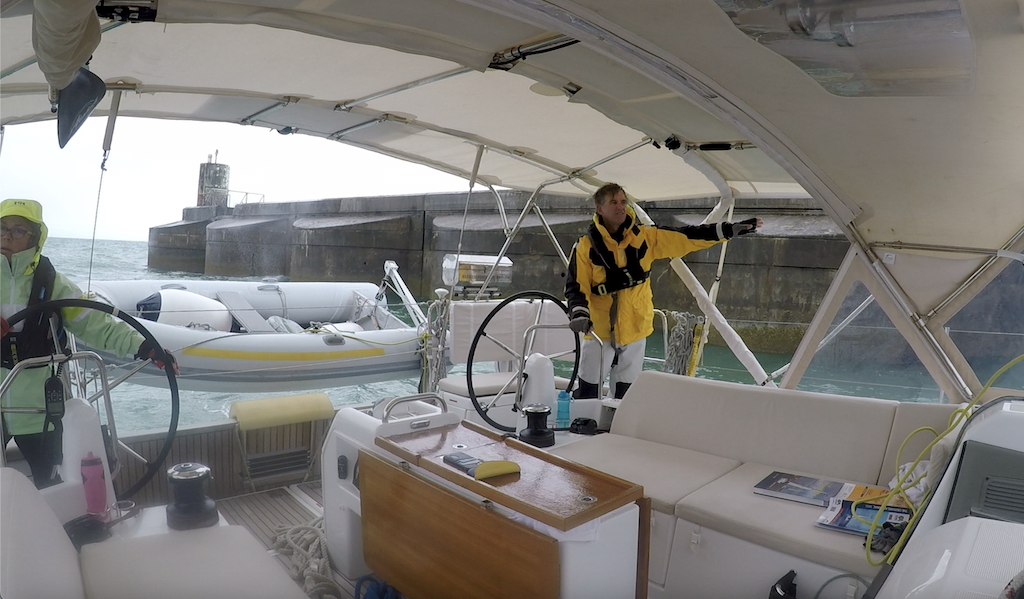
Once inside the two sea walls, it was a different world. Wind whistled through the rigging at the top of the mast, and bursts of wavelets sped across in front of us, but the water was flat and manageable. After repeated calls on the VHF, the marina finally answered and assigned us a berth for two days. We had already agreed with each other to take an extra day here in order to let this storm run its course before we set out again.
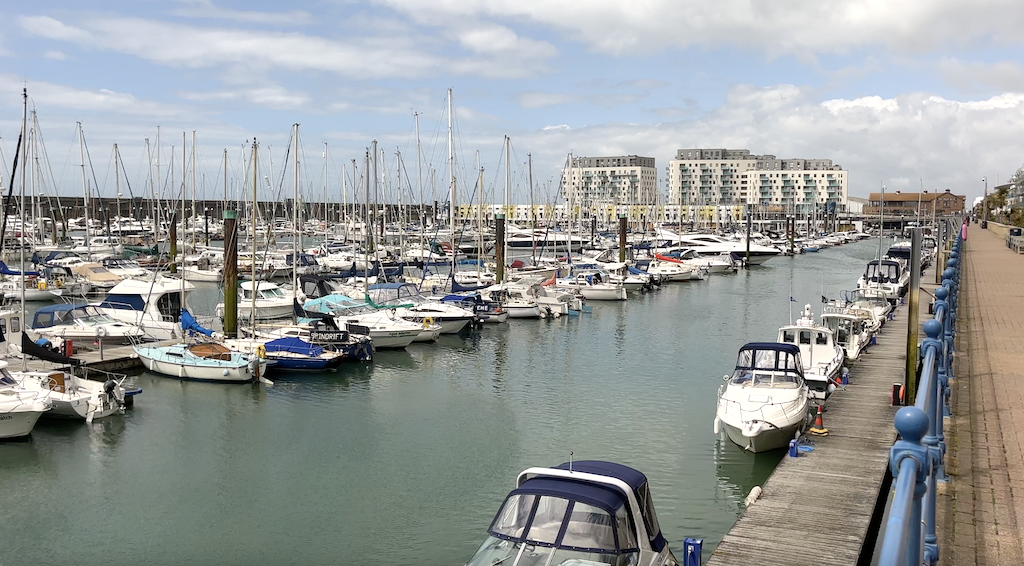
The marina was rumored to be the largest in the UK, and while it was impressively large, the high number of derelict boats was much less impressive. Many of them were live aboard boats, which I’m not opposed to – I was a live aboard for a year of fond memories – but when high winds come through, these are the first boats to work free of their moorings, bouncing around the marina like a steel ball in a slow motion pin ball machine. The marina was also several miles outside of town, giving us an excuse to learn the public bus system – a service that was prompt, friendly, well signed and comfortable – basically the polar opposite to our public buses back home.
Brighton is a seaside resort community full of long sandy beaches that, once summer got into full swing and the storm-forced waves retreated, would make for a pleasant holiday destination for inlanders. It was nice to see that the honky-tonk seaside attractions we knew so well from popular American beaches, from Southern California to New England, shared a common lineage with Old England. Cotton candy, french fries, kiddie rides and plastic beach toys were ready on the pier to be swapped with genuine British Pounds. We opted instead to people watch the narrow alley ways set back from the beach scene and ponder, after finding a plethora of jewelry and fine watch stores, the merit of a middle ground for the rest of us, somewhere between the plastic beach pails and diamond-studded earrings. We continued the incongruity by skipping English fare while in England for an Italian restaurant run by a bubbly Sardinian man overjoyed both with our American roots and our admiration for his island nation. Continuing the divergence from any Brighton Beach Memoir parallels, we walked the grounds of King George VI’s royal palace, a landmark with out-of-context India architecture that I’m sure in its day was a gem but today was in urgent need of TLC. Maybe a string of non-sequiturs was the city council’s new mantra. I personally preferred the city of Portsmouth’s landmark achievements.
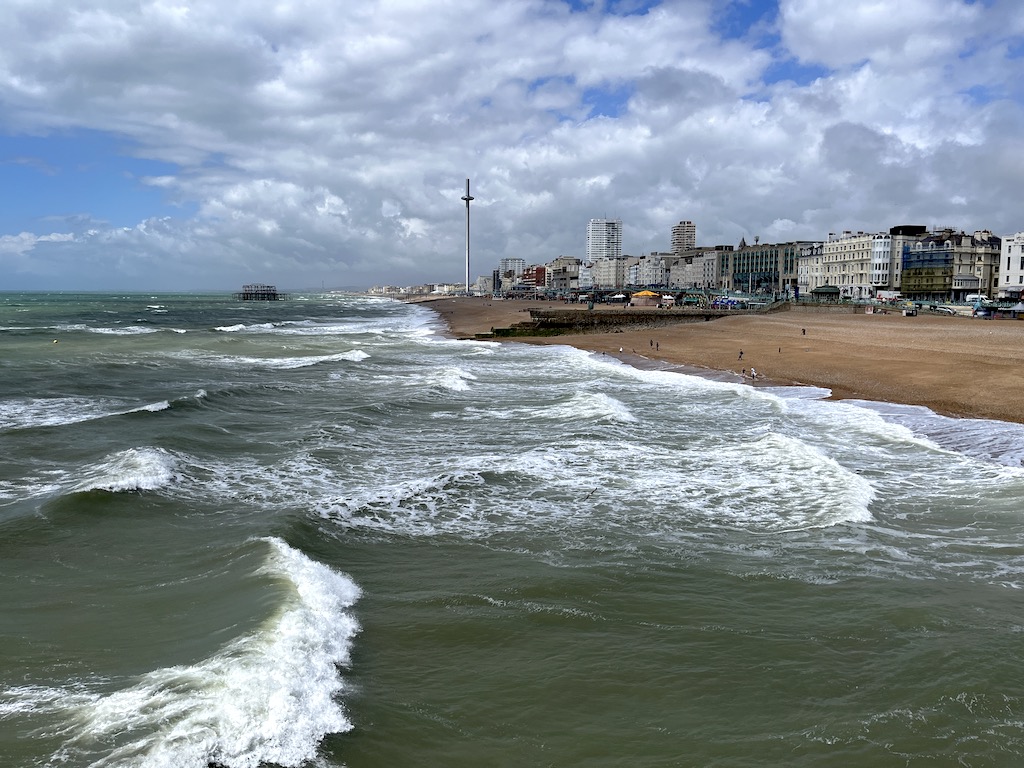

After a little R&R, we were ready to head out again for points east on news of more modest wind and seas. On our boat, when there’s a hint of ‘light’ and ‘downwind’ in the forecast, it’s time to load up the quiver that is the Code 0. This we did in the safety of the marina slip at 5am before our departure, knowing that with leftover seas from the past two days, it would be a lot rougher to raise the sail while underway.
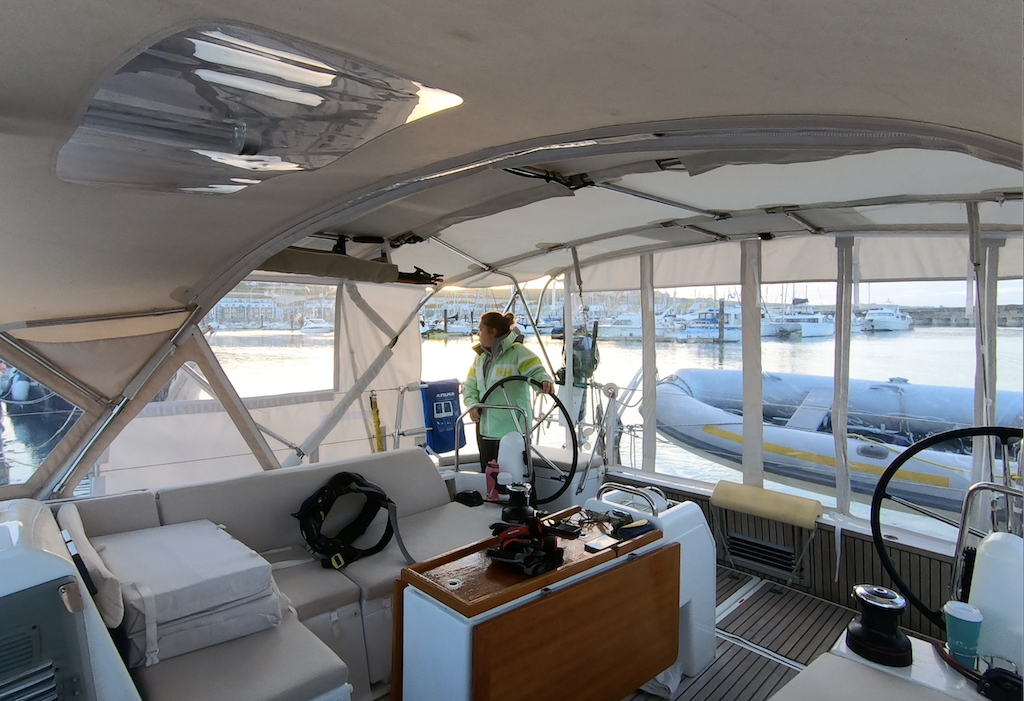
With these early morning starts, at just after sunrise, your mind can be thrown off. It’s daylight, so it can seem like a normal time to be up and around, yet it is anything but normal, with the elongated summer days in these northern latitudes. We were looking forward to experiencing more of this as we moved into the Baltic Sea.
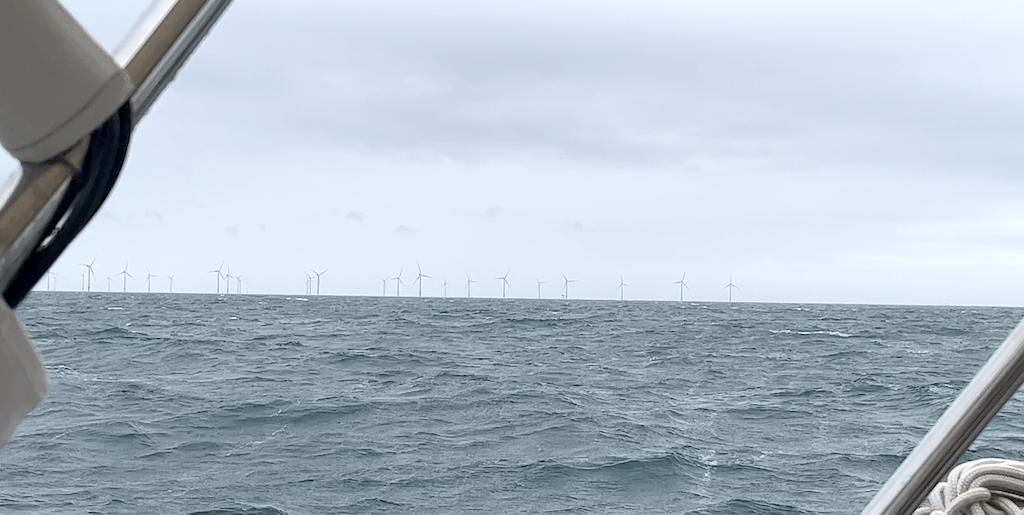
One of the criticisms from sailors in the English Channel is the large number of wind farms in place or being constructed. From the way some people describe them, you would think there was no more open space left to sail – a gross exaggeration. There are indeed many wind farms, and for nearly all of them, it is forbidden to sail in between the towers. But there is plenty of room for boaters to enjoy the waters and safely navigate to their destination. Often, the farms are located on shallower, shoal areas that would have been difficult to navigate through anyway, at least for larger vessels. And I take issue with the NIMBY (Not In My Back Yard) crowd in this instance. These wind turbines are a non-polluting energy source and they provide plenty of jobs – both during construction and for ongoing maintenance. Besides, who are we to complain? We are using the wind to propel our pleasure boat and it would seem hypocritical to not allow that same wind to be put to use to keep our lights on and our factories humming.
Once clear of the marina and the uneven waves near the coast, we were able to set our mainsail and code 0 for our push eastward. There was no way around it, this was going to be a very long day. The normal nightly stopping point in this direction would have been the harbor at Dover. It’s a large harbor but with a constant flow of passenger ferries coming and going from the Channel at this, its narrowest point. The marina was recently closed to pleasure boats – it was unclear whether for construction or just because we would get in the way of all the activity. With this option off the table, we would have to continue on to Ramsgate, some 80 nautical miles away. We would have much preferred to stop at Dover, and then do the crossing to France, as Ramsgate put us beyond the narrows, where both the English and French coasts diverge away from each other. If you need a visual, it is like stepping off a boat to a dock, but the dock was a little further away than you initially thought, and there you stand, spread-eagled, wishing the boat wouldn’t keep moving further away! Alas, Ramsgate it was. But we made the best of it. In fact, it was one of our nicer sails, and by ‘nice’ I don’t mean a lazy Sunday afternoon sail. The winds were still strong from the previous storm. As the coast turned more northeast, and the wind clocked around behind us, we set sails in the wing-and-wind configuration, with the help of the whisker pole holding out the Code 0. Eventually the wind, pushing over 20 knots, was too much for the Code 0 and we downsized to a poled-out jib. With this setup, and a little extra help with our cockpit stern panel catching some wind, we were racing down the face of swells and ticking away the miles in fine fashion. Wing-and-wing is a tricky configuration since you have to hold the boat’s course exactly downwind. Any deviation from the wind directly behind you can cause the jib to collapse or worse, the mainsail to accidentally gybe across, a dangerous and damaging event for the entire rig. We had assembled a ‘preventer’, a long line from the end of the boom to the amidships cleat, to keep the boom from suddenly gybing. But still, it’s a tenuous course and requires the helms person to watch the apparent wind angle like a hawk, keeping it right on 180 degrees. Yet, we started using the autopilot and it was doing an impressive job by itself. Normally, downwind sailing is hard on an autopilot, as waves that sweep under the stern can push the boat suddenly to port or starboard, the kind of course change that wreaks havoc on wing-and-wing. But today, the software engineers behind the autopilot tech were being congratulated for their fine workmanship.
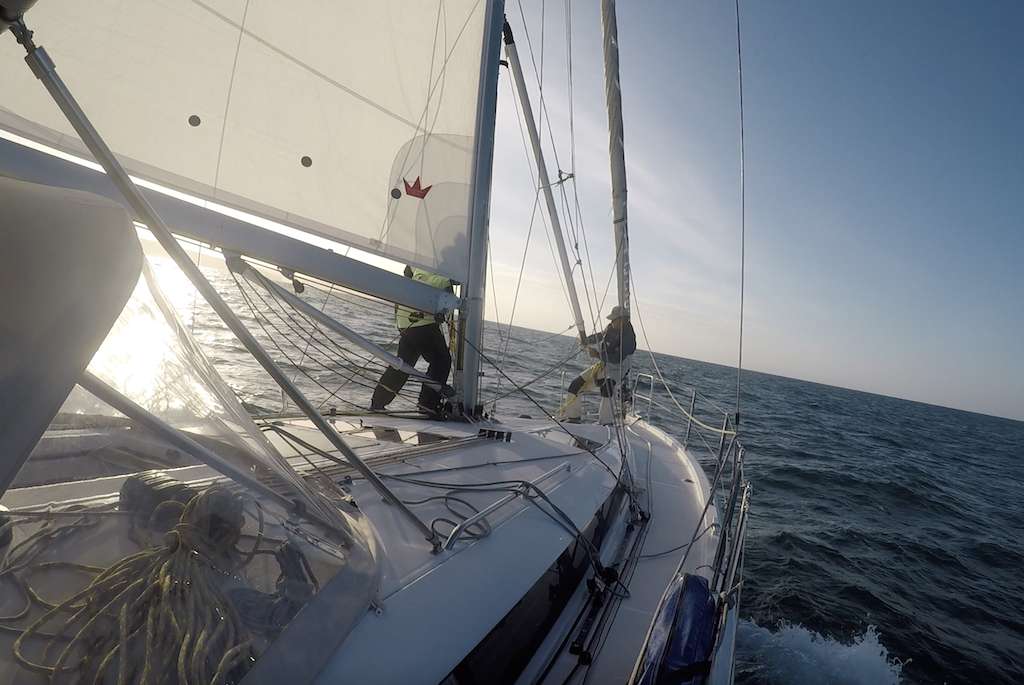
And, the views did not disappoint. There are several points of land pushing out into the English Channel along this route, with the most scenic being the oddly named ‘Beachy Head’. I would have named it ‘Cliffy Head’ if I lived back in the day when these landmarks were uncharted. Large chalky white cliffs rose out of the sea mist and ended at a high plateau with such bright green pasture land, it had the look of artificial green like the canvas of a child’s painting, limiting their color choices and left to choose the single Kelly Green shade.
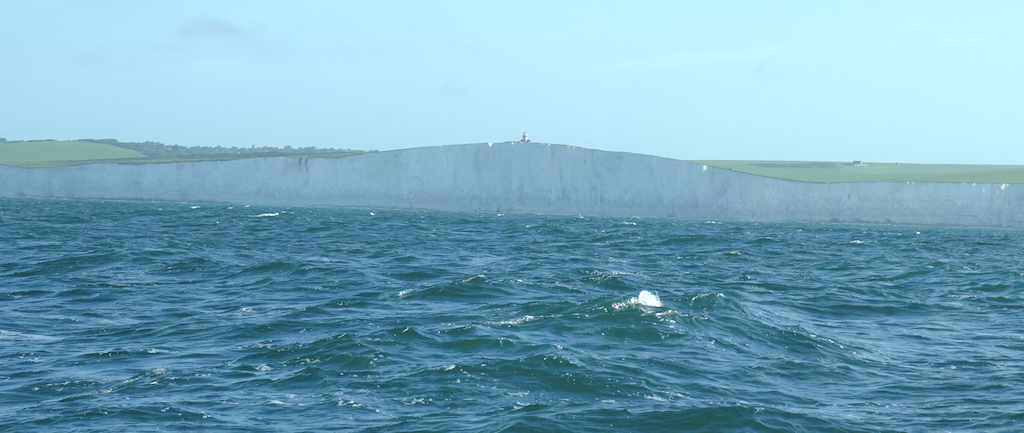
Beauty can have a fleeting existence. At the next peninsula, with the hopeful name of ‘Dungeness’, an ominous gray building complex arose from the sea on skinny low land that seemed to have hours, not years, before rising sea levels would consume it. I’m sure it made sense at one point. “Hey, let’s put that power station out on that point there, far enough away from our town.” I could handle the eyesore – life presumably would be quite boring with just rainbows and unicorns – but surely there could have been a safer place to locate this industrial behemoth.
The harbor of Dover was unmistakable ahead, not as much for the famed white cliffs – which I thought were not as impressive as those back at Beachy Head – but for the silhouettes of passenger ferries on the horizon. The day was starting to turn hazy, like summer days can when there’s a trifecta of sun, heat and humidity. It could also have been the gloom that surrounded this desolate spot. Dover was one of those landmark places I had built up in my head as we left the Med last summer. I pictured its stunning cliffs, with little umbrella-adorned cafes overlooking the deep blue waters of the English Channel. On this day at least, its towering rows of concrete breakwaters, industrial warehouse-style buildings ashore, and the strictly business end of constant ferry traffic combined to leave the charm gauge hovering just above 0. I hailed Dover VTS (Vessel Tracking) on the radio, as one is required to do regardless if you are going into the harbor or passing offshore of it, and received clearance to proceed past. No tears were shed.

But the pain came soon enough when we had to turn nearly north on our new heading to Ramsgate, while the French coast, in the hazy distance, disappeared to the east. The seafloor between Dover and Ramsgate was not as innocent and carefree as it was back towards Brighton. Shoals and rocky bits littered the chart, as did far too many icons labelled ‘historic wreck’. That was not how we wanted to go ‘down’ in the history books. On the final approach into Ramsgate, they had dredged a skinny channel between well marked red and green channel buoy pairs. Pleasingly, as we turned onto this final heading, the wind that had softened in the afternoon suddenly found a new voice, singing to our sails, as we screamed along close-hauled, leading some of the Sea Rose crew to hoot and holler with joy! As the saying goes, ‘coming in hot’!
One lone kid, who could have easily still been in grade school, helped us with our docklines, dropped our bank account slightly for the night’s payment, was kind enough to embelish us with a few restaurant suggestions for a couple of hungry sailors before he turned back to his little one person hut at the top of the breakwater to continue examining the contents of his smartphone.
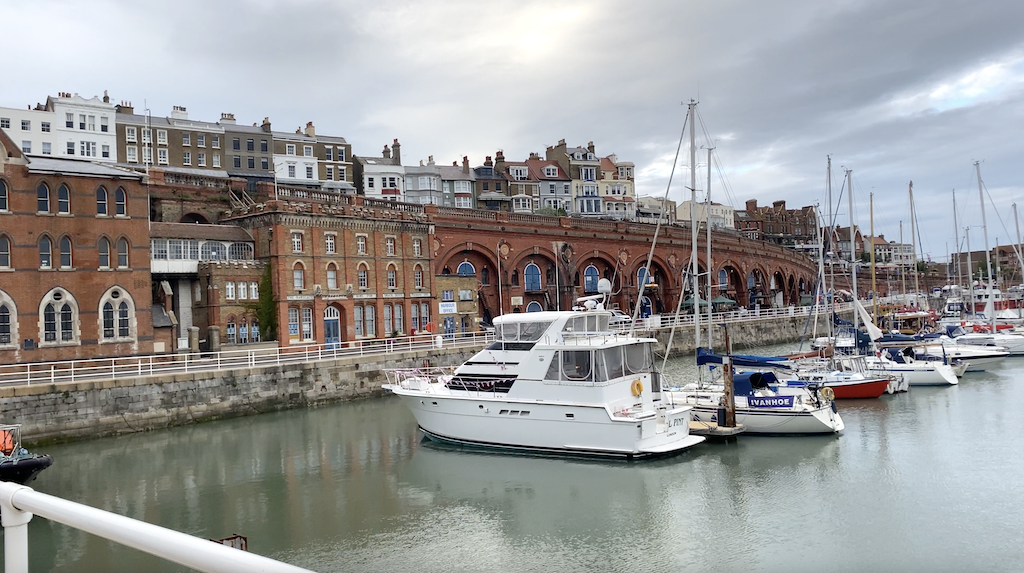
Ashore, Ramsgate existed in a middle earth state – it could have easily been pre or post peak season – with just enough services open to serve what felt like a skeleton crew of residents. It could quite possibly have been the gray state of the sky, the absence of sunlight being a remarkable randomizer of moods. The few open restaurants lacked a tantalizing appeal, and a couple others had closed their kitchens, finding the bar patrons to be a more reliable source of cash flow. We took a gamble on a little Italian place – what city does not have one – and our patience was rewarded with a fine rotisserie chicken and fresh gnocchi. A few extra carbs on such a long day’s journey was welcome nourishment. Over ground we had sailed about 80 miles, but factoring in the adverse current, it was likely closer to 100 miles through the water, the upper range for a passage during daylight hours.
With our batteries starting to recharge, it was imperative that we finish our replenishment with a restful night of sleep. In the morning, we would be casting off our lines from the UK and striking out for Belgium, once again running the gauntlet with English Channel shipping and quite a few shoals and wind farms. This stretch of the UK had been a memorable collage of fair winds, striking scenery, and genuine people. If mankind could be so kind, we hoped for much more over the horizon.
Be sure to also checkout the video content on our LifeFourPointZero YouTube channel. We regularly post updates on our sailing adventures, as well as how to videos on boat repair, sailing techniques, and more!

